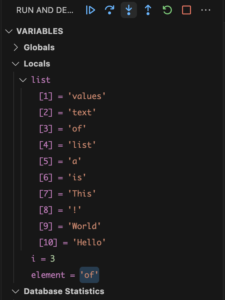 In the AL language for Microsoft Dynamics 365 Business Central, the Dictionary data type represents an unordered collection of keys and values optimized for fast lookup of values. In a Dictionary, each key is unique and is used to access its corresponding value. The dictionary data type allows you to store key-value pairs where there is a logical association between the pairs or when you need fast data retrieval based on a custom key. Unlike lists indexed by a range of numbers, dictionaries are indexed by keys.
In the AL language for Microsoft Dynamics 365 Business Central, the Dictionary data type represents an unordered collection of keys and values optimized for fast lookup of values. In a Dictionary, each key is unique and is used to access its corresponding value. The dictionary data type allows you to store key-value pairs where there is a logical association between the pairs or when you need fast data retrieval based on a custom key. Unlike lists indexed by a range of numbers, dictionaries are indexed by keys.
It is important to note that every key in a Dictionary must be unique. A key cannot be null, but a value can be null when the value type is a reference type.
To create a new Dictionary that contains the same values as the original Dictionary, you perform a shallow copy by iterating through the keys of the original Dictionary and adding them to the new Dictionary.
The Dictionary data type does not support holding instantiated records. For this purpose, a developer should use a temporary table instead.
Add
Adds the specified key and value to the dictionary
procedure AddDictionaryEntry(SalesDictionary: Dictionary of [Text, Decimal])
begin
SalesDictionary.Add('10000', 1234.56);
SalesDictionary.Add('20000', 9564.22);
SalesDictionary.Add('30000', 789.12);
SalesDictionary.Add('40000', 456.78);
end;ContainsKey
Determines whether the Dictionary contains the specified key.
procedure ContainsKey(SalesDictionary: Dictionary of [Text, Decimal])
var
ContainsKey: Boolean;
begin
ContainsKey := SalesDictionary.ContainsKey('10000');
end;Count
Gets the number of key/value pairs contained in the Dictionary.
procedure KeyCount(SalesDictionary: Dictionary of [Text, Decimal]): Integer
var
Count: Integer;
begin
Count := SalesDictionary.Count();
exit(Count);
end;Get
Gets the value associated with the specified key.
procedure GetValue(SalesDictionary: Dictionary of [Text, Decimal]; dictkey: Text): Decimal
var
dictvalue: Decimal;
begin
// Get will error if the key does not exist
// You can use contains to check if the key exists
if SalesDictionary.ContainsKey(dictkey) then
SalesDictionary.Get(dictkey, dictvalue);
dictvalue := SalesDictionary.Get(dictkey);
exit(dictvalue);
end;Keys / Values
Gets a collection containing the keys / Values in the Dictionary.
procedure GetKeysValues(SalesDictionary: Dictionary of [Text, Decimal]; KeysList: List of [Text]; ValuesList: List of [Decimal])
begin
KeysList := SalesDictionary.Keys();
ValuesList := SalesDictionary.Values();
end;Remove
Removes the value with the specified key from the Dictionary.
procedure RemoveKey(SalesDictionary: Dictionary of [Text, Decimal])
begin
SalesDictionary.Remove('40000');
end;The Dictionary data type is optimized for lookups, allowing for efficient storage and retrieval of values without the need to query the database repeatedly.
Overall, the Dictionary data type in Business Central is not just a powerful tool but a crucial one for efficiently storing and retrieving key-value pairs. It is an asset for developers, underscoring the significance of their work with data structures in AL code.
Read more about the Dictionary Data Type here.
Note: The code and information discussed in this article are for informational and demonstration purposes only. This content was created referencing Microsoft Dynamics 365 Business Central 2024 Wave 1 online.







 available.
available.

















